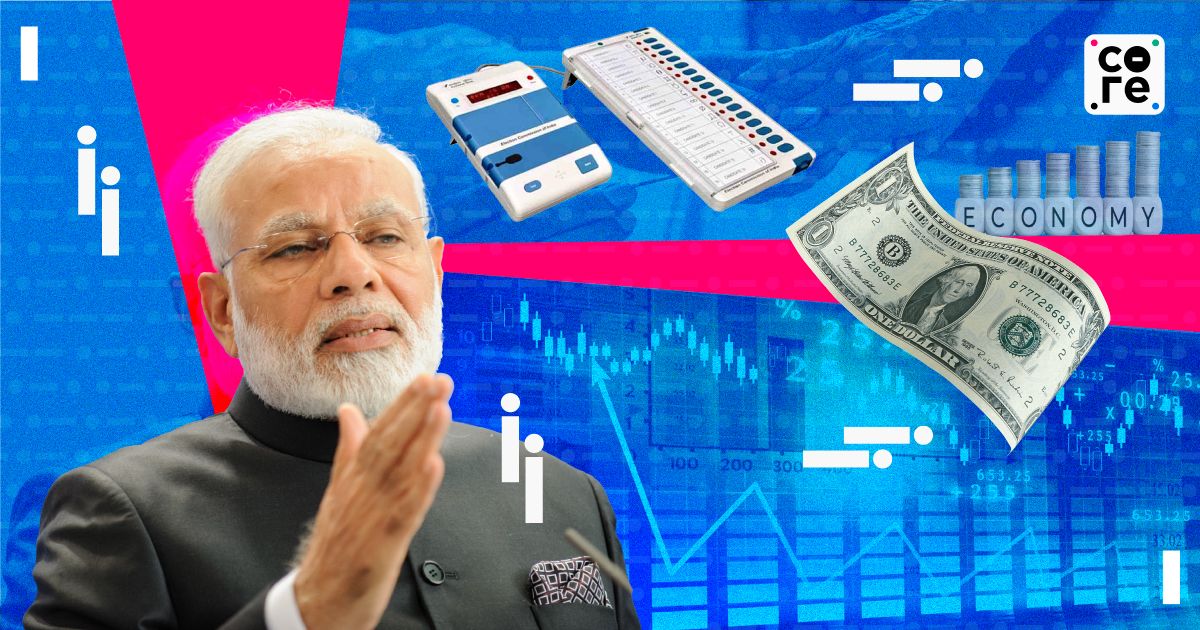Indian consumers want entertainment, but for free (see this edition of The Impression). At last year’s edition of the annual media and entertainment business conference called FICCI Frames, a massive report and a three-day conference concluded that media subscriptions were stagnating, meaning the industry must come up with as many ad-funded business models as it could.
This year’s headline figures look rosy. India’s media and entertainment industry grew 8.1% to be worth Rs 2.3 lakh crore in 2023 and will cross Rs 3 lakh crore in two years. Almost all sectors—from digital entertainment and gaming to music and even radio and print—grew between 6-20% each.
But all this growth masks irreversible changes in the business of media, and top executives know it. Indians aren’t paying directly for content, yes. But advertisers are not putting enough money either. And an impossible number of media formats are all fighting for ad revenue that isn’t growing like it once did.
It all starts with the biggest hole in this growth story: television.
Last year, the TV business declined 1.3% to rs 69,600 crore. This decline was the result of cascading effects. TV ads fell 6.5% in the first half of 2023 because gaming and direct-to-consumer (D2C) companies, who were spending heavily on ads, hit a wall. Real money gaming companies have been struggling to survive ever since the government hit them with a 28% GST tax rate on the full value of bets, while D2C companies are suffering in the funding slowdown.
But isn’t digital here to save the day? Perhaps.
Slow But Steady?
Digital media (video, audio, social media) grew 13.5% to Rs 65,400 crore, the second largest piece of the media industry pie after TV. The FICCI-EY report (pdf) predicts that digital media will surpass TV in value by the end of this year. Already in 2023, digital advertising revenue crossed that of TV and more than 70% of it came from social media and e-commerce advertising.
This should be good news. Media companies everywhere are learning to let go of their traditional cash cows—such as cable TV—and find ways to make money from digital media. So far, there are few success stories. Look past the headline number, and you can see how precarious the growth of India’s digital media is too:
-
Digital media’s growth rate has halved: digital ads increased by 15%, but subscriptions grew by a paltry 8.3% last year
-
Splitting IPL rights hurt everybody: paid video subscriptions fell by two million last year as JioCinema made the IPL free to watch. It helped boost the IPL’s digital ad revenue by 40% but TV, which attracts more viewers, had a 50% drop in ad revenue.
-
Small businesses are spending too carefully: digital advertising may have risen, but the long tail of small and medium businesses accounted for only a third of it. Most of it went to search, social media, and e-commerce/classified ads, all part of low-cost performance advertising. The FICCI-EY report said small and medium enterprises (SMEs) spend as little as Rs 20,000 annually on digital advertising.
-
We still consume without paying much: Indians download more apps and spend more hours online than every country in the world except China. Five hundred and sixty-three million Indians watch online video alone, the most popular kind of content on the internet. Yet, in 2023, Indians spent only 60 cents per person on online media compared to over $45 per person in the US and $52 in China. This year and two years from now, digital subscriptions will remain at 12% of the total value of digital media.
-
There aren’t enough ads either: despite so much consumption, advertising is a paltry contributor to India’s economy. In 2023, it grew slower than our nominal GDP and accounted for only 0.33%, compared to the US (1%) and China (0.6%).
Top media executives understand this. That’s why at this year’s FICCI Frames panels, most of them emphasised being ‘platform agnostic’ and wanting to spend on every possible mass medium.
“We aren’t digital or traditional,” Kevin Vaz, CEO, of Broadcast Entertainment at Viacom18, said at one panel. “At the end of the day, we are a content company. We are agnostic to all that [traditional vs digital media debate]. The number of screens is growing and we aim to put great content on these screens.” Vaz cited Viacom18’s biggest reality TV hit Bigg Boss as an example: “About 30% of our viewership comes from our digital platforms at the same time when Bigg Boss plays on TV.”
Spending To The Rescue
Other executives are hoping they can outspend this period of uncertainty until Indian consumers (hopefully) settle into new ways. “Our investment thesis is built for this category over a long period of time,” Sushant Sreeram, country director for Prime Video India, said when asked about Amazon’s massive spending on prestige streaming shows and digital rights to big-budget films. “We want to create a category… of customers who value great cinematic storytelling. Our investment thesis is looking through the lens of how to bring more customers to enjoy this multi-benefits programme called Prime.”
Amazon can afford to keep spending on Prime Video because it’s building many more lines of revenue from entertainment, including selling subscription bundles of other OTT platforms and offering movies on rent. Some of Prime Video’s plans feed directly into Amazon’s e-commerce business. For example, Amazon’s miniTV viewers buy 2.5x more from Amazon India compared to other shoppers, the FICCI-EY report said. Amazon identifies 40% of miniTV viewers as its top 20 percentile shoppers by money spent.
A slowdown in advertising isn’t entirely in the media industry’s control. A crunch in venture capital and private equity funding, a dramatic change in taxation, and an ongoing consumption slowdown among ordinary Indians may force brands to focus on survival and spend less on ads for the time being. Subscriptions are supposed to help tide over these lean periods, but they’re barely keeping up with even a slowed-down digital advertising market. Meanwhile, TV continues to decline. Premium audiences in urban areas are cutting the cord, and at over 1.5 trillion impressions a year, TV viewership overall is still well below pre-pandemic levels.
Music To Their Ears
There’s some hope in one segment: music. Despite losing 15 million monthly users, music streaming platforms were able to boost their subscriptions by 55% year-on-year “on the back of significant industry efforts in that direction”, the report said.
Last month, music label Saregama’s management told investors it was confident that music subscriptions would grow in India. “You have just touched the tip of the iceberg,” Saregama’s managing director Vikram Mehra said in an earnings call in February (pdf). “As the subscription economy starts taking off in the next 18, 24 months, you will see lots of money being made… it’s not that Indians don’t want to pay. But you need to give them value and need to somewhere stop the availability of free content. Then people are ready to pay for entertainment.”
Mehra had told investors and analysts in earlier calls that the only way to nudge listeners to pay for music was for all major platforms to collectively enforce a paywall. Last year, Spotify took basic functions behind a paywall, such as repeating a song or playing the previous track. Meanwhile, rival Resso moved to a subscription-only model like The Times Group-owned Gaana.
But this story isn’t a complete success just yet. Video-streaming website YouTube is still India’s largest music-streaming platform, making most of its money from ads. Only 4% of India’s 185 million music streamers are paying for a subscription. The FICCI-EY report predicts paying subscribers could grow to 15 million in two years and become 35-40 million before 2030, as long as subscription prices don’t change. The music streaming industry continues to expand its user base.
Nudging together is something the rest of the Indian media industry will need to think about too. After some years of fierce competition at any cost, we’ll likely see everyone engage in more cooperation (and consolidation).





